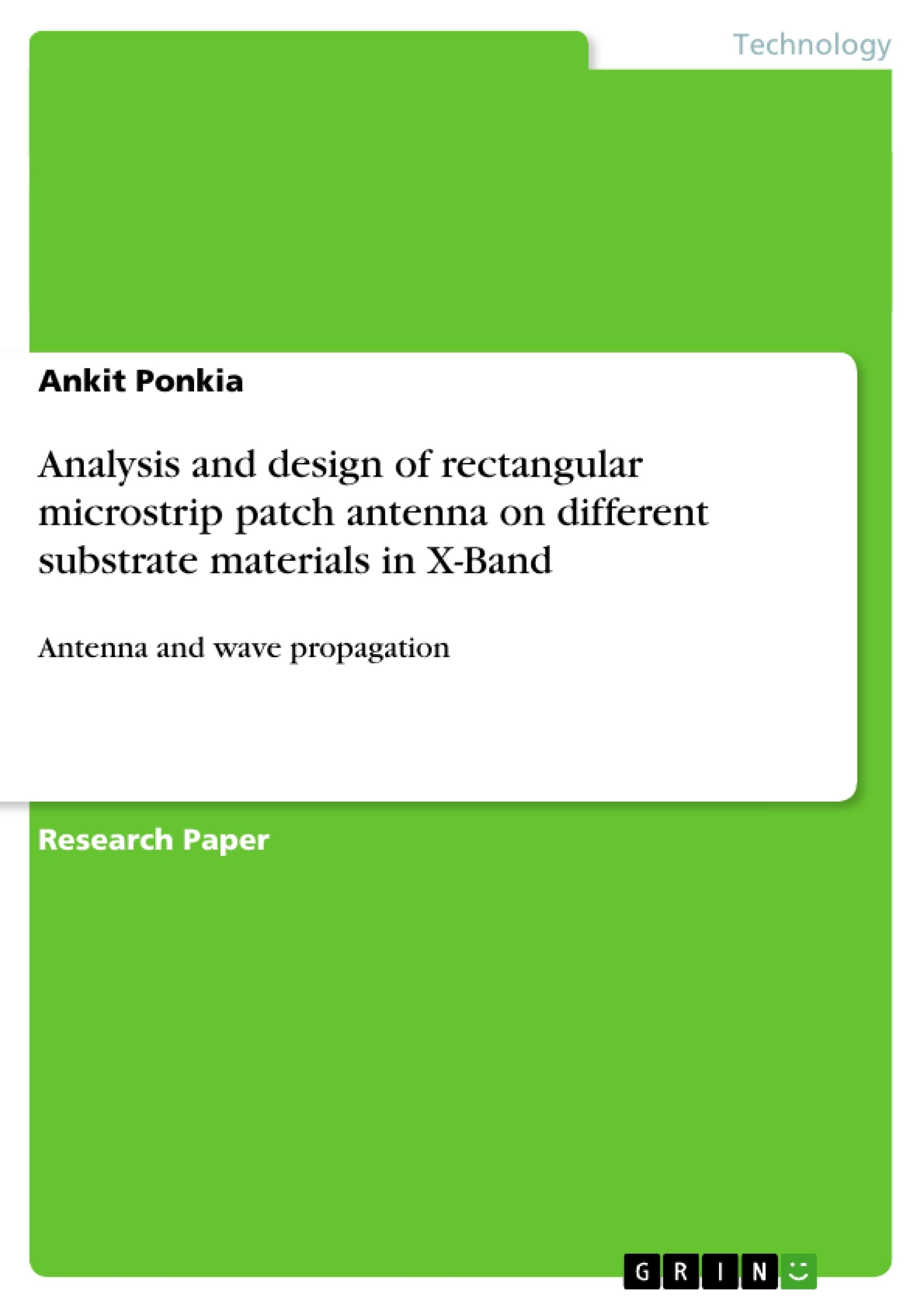In this paper software based design and analysis has been carried out for a rectangular patch antenna using different substrate materials. A coaxial probe fed rectangular microstrip patch antenna operating at X-band (8 to 12 GHz) is analyzed on different substrate materials like Rogers RT/duroid 5880, Rogers RT/duroid 5870, Neltec NX9240, Arlon DiClad 522, and FR4_epoxy. The design is analyzed by Finite Element Method (FEM) based HFSS™ EM simulator software. Return loss, VSWR plot, smith chart and radiation pattern plots are observed and plotted for all antennas.
Inhaltsverzeichnis (Table of Contents)
- INTRODUCTION
- ANTENNA DESIGN
- Design Procedure Steps:
- SIMULATION RESULTS
Zielsetzung und Themenschwerpunkte (Objectives and Key Themes)
This paper explores the design and analysis of a rectangular microstrip patch antenna operating at X-band, investigating the impact of different substrate materials on antenna performance.
- Analysis of a rectangular microstrip patch antenna operating in X-band.
- Investigation of the influence of various substrate materials on antenna performance.
- Evaluation of antenna characteristics like return loss, VSWR, and radiation patterns.
- Application of Finite Element Method (FEM) for simulating antenna performance.
- Comparison of antenna performance across different substrate materials.
Zusammenfassung der Kapitel (Chapter Summaries)
- INTRODUCTION: This section provides an overview of the advantages of microstrip patch antennas (MSAs), highlighting their low profile, lightweight nature, and ease of fabrication. It also discusses the growing demand for MSAs in various applications, such as personal communication systems, mobile satellite communications, and intelligent vehicle highway systems. The section further introduces the different types of radiating patch configurations available, emphasizing the popularity of rectangular microstrip patches due to their simplicity. Finally, it outlines the key characteristics of microstrip antennas, including the thin radiating patch and the dielectric substrate.
- ANTENNA DESIGN: This section delves into the design process for a rectangular microstrip patch antenna, utilizing both transmission-line and cavity models. It presents equations for calculating essential parameters like the effective dielectric constant, patch length extension, and resonant frequency. The design procedure is outlined in steps, providing a practical guide for designing the antenna. The section concludes with a description of the antenna's geometry and the specific substrate materials used in the analysis.
- SIMULATION RESULTS: This section discusses the simulation of the proposed antenna using HFSS™, a powerful electromagnetic field simulator. It explains the capabilities of HFSS™ in modeling and analyzing 3D passive devices. The section then presents the simulation results for the antenna, showcasing return loss vs. frequency plots for different substrate materials. These plots provide valuable insights into the antenna's performance characteristics.
Schlüsselwörter (Keywords)
This paper focuses on rectangular microstrip patch antennas, substrate materials, X-band operation, return loss, VSWR, and Finite Element Method (FEM) simulation. It analyzes the impact of various substrate materials on antenna performance, providing insights into design considerations for practical applications.
- Citation du texte
- Ankit Ponkia (Auteur), 2014, Analysis and design of rectangular microstrip patch antenna on different substrate materials in X-Band, Munich, GRIN Verlag, https://www.grin.com/document/270364



